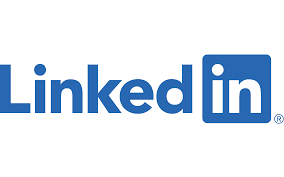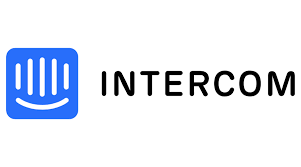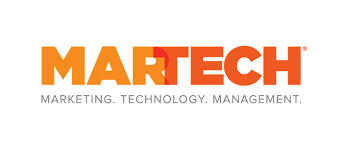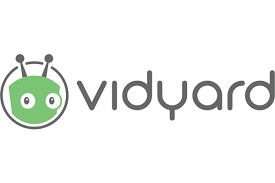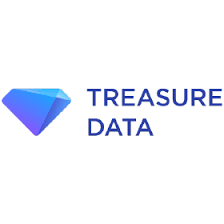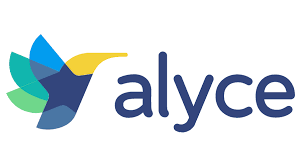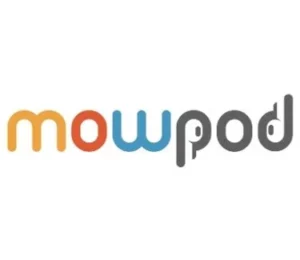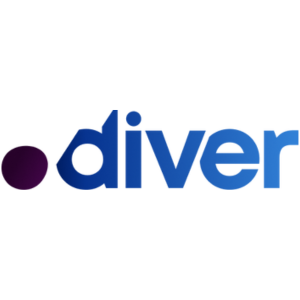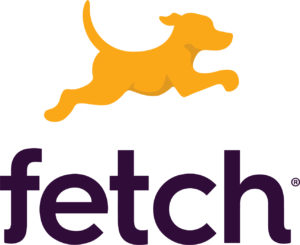LISTEN IN A POD APP
Filters
Adetutu Laditan | YouTube
Collaborating with creators for YouTube Growth — Adetutu Laditan // YouTube
Adetutu Laditan, Senior Product Marketing Manager for Sub-Saharan Africa at YouTube, explores YouTube monetization and growth. In marketing today, trust holds immense value, and creators have become beacons of trust, influencing consumer brand perceptions. Collaborating with creators on YouTube offers brands a way to authentically connect with audiences, scale messaging, and drive conversions.Today, Adetutu discusses…
Play PodcastAdetutu Laditan | YouTube
Roadmap to monetizing YouTube content — Adetutu Laditan // YouTube
Adetutu Laditan, Senior Product Marketing Manager for Sub-Saharan Africa at YouTube, explores YouTube monetization and growth. YouTube, the world's second largest search engine, holds vast potential for marketers. But, transforming video production into a monetization opportunity on the platform requires a strategic approach. Today, Adetutu discusses the roadmap to monetizing your YouTube content.
Play PodcastJennifer Jones-Mitchell | Human Driven AI
Using Gen AI for Design — Jennifer Jones-Mitchell // Human Driven AI
Jennifer Jones-Mitchell, Founder and Creator Coach at Human Driven AI, delves into generative AI. Tools like Midjourney and DALL-E are simplifying the creation of stunning visuals for non-designers in a fraction of the time it would take within Photoshop or Illustrator. However, now that Adobe has integrated AI across its Creative Suite, creating brand-consistent visual…
Play PodcastPhil Johnson | Master of Business Leadership Inc.
The value of Emotional Intelligence — Phil Johnson // Master of Business Leadership Inc.
Founder and CEO of Master of Business Leadership Inc., Phil Johnson, wraps up his thoughts on what it takes to be a great marketing leader. Being an effective leader goes beyond motivating people to work harder. Like your customers, it is about building the level of trust they have for you. Today, Phil discusses the…
Play PodcastPhil Johnson | Master of Business Leadership Inc.
Mastering business leadership — Phil Johnson // Master of Business Leadership Inc.
Founder and CEO of Master of Business Leadership Inc., Phil Johnson, talks about what it takes to be a great marketing leader. Leadership can make or break a business. Good leaders empower their teams to thrive, while toxic ones can inhibit growth. Today, Phil discusses mastering business leadership.
Play PodcastCurtis Boyd | Objection Co
Digital fraud in America 2021 — Curtis Boyd / Objection Co
Today, Ben and Curtis Boyd, Founder of Objection.Co, talk about the status of digital fraud in America in 2021. With the prevalence of fake reviews, how can Americans be confident about the business that they want to support? On the flip side, how can businesses avoid being targeted and exploited by fake reviewers? Ben and…
Play PodcastCurtis Boyd | Objection Co
Reputation hackers secrets — Curtis Boyd / Objection Co
Ben continues his conversation with Curtis Boyd, Founder of Objection.Co about the status of digital fraud. The truth is that fake reviews are pretty effective for the short term. But that is only until you get caught buying them. So today, Ben and Curtis talk about reputation hackers’ secrets.
Play PodcastCurtis Boyd | Objection Co
The truth about fake reviews
Ben discusses the status of digital fraud with Curtis Boyd, Founder of Objection.Co. In recent years, we’ve all seen the mini documentaries exposing people who do fake reviews. But can fake reviews really affect your business? Today, Ben and Curtis talk about the truth behind fake reviews.
Play PodcastVlad Zhovtenko | RedTrack.io
Impact of the death of 3rd party cookies — Vlad Zhovtenko // RedTrack.io
Simply put, ad tracking is changing. Vlad Zhovtenko, CEO and Co-founder of RedTrack, talks with Ben about the impending death of third-party cookies. Before industry giants started conversations to remove them, third-party cookies were a mainstay for most websites. Now that marketing is taking a different direction, what does this mean for the future of…
Play PodcastVlad Zhovtenko | RedTrack.io
Facebook Conversion API changes — Vlad Zhovtenko // RedTrack.io
Vlad Zhovtenko, CEO and Co-founder of RedTrack, discusses the changes to Facebook’s conversion API with Ben. Is there any advantage from going the pixel-free route? A lot of changes are being made surrounding privacy concerns and this directly affects data tracking and collection. We’re currently in one of the most exciting and game-changing eras in…
Play PodcastAbout Marketing Channel: Social Media Marketing
What is Social Media Marketing?
Social media marketing leverages social platforms (AKA: social networks) to connect with global audiences to build brand recognition, drive traffic, promote products, and drive online sales. Businesses ranging from SMBs to Enterprise-scale companies utilize social media marketing to build reach, awareness, and consideration amongst both new prospects and existing leads. Social media marketing is also an effective tool to retarget existing customers.
Social media platforms are unique as they provide businesses with a variety of ad formats (IE: In-stream advertising) to reach the desired target audience. Most social media marketing platforms are equipped with platform-specific analytics tools designed to help marketers track ad campaign progress and provide actionable data-driven insights.
Social media marketing strategies can be an essential component to the success of a company's overall marketing strategy. A particular challenge of social media marketing strategies is a one-size-fits-all approach doesn't exist. For example, LinkedIn is specifically designed to reach the B2B audience, while Instagram is more tailored to B2C buyers. Marketers need to gauge whether their engagement strategies should focus on understanding their target audience and providing them relevant content to drive the desired conversion.
Although no size fits all, social media marketing is a near all-in-one marketing powerhouse. Social media marketers can leverage the creative power of social sharing tools like video, audio, podcasts and more to create high-quality, brand-defining campaigns.
Types of Social Media Networks
Social media specialize in creating and sharing different forms of content. Social networks like Facebook-owned Instagram offer nearly a full suite of content sharing features including video, Instagram Ads, Instagram Live, photos, and more. Others, like LinkedIn, specialize in sharing B2B specific content. While other channels like YouTube, take specialize in a specific format of content with their video creation and sharing platform.
The types of social media networks include:
- Social networking: Facebook, Linkedin
- Video sharing: TikTok, Vimeo, YouTube
- Photo sharing: Instagram, Pinterest, Snapchat
- Blogging platforms Tumblr, Wix, Twitter
- Business review platforms Yelp, Google
Engagement
Engagement is a core metric that measures the likes, shares, comments and interactions followers have with a social media post. A common misconception is the viewpoint that the more followers you have, the more engagement your brand receives.
Keeping followers engaged with your brand requires high-quality content that encourages users to react and develops relationships with existing, new and future followers. Engagement messaging is a focus point of social media marketing strategies. Messaging differs by brand, and differentiating your brand in a creative, eye-catching way is key to boosting engagement.
Athletic brands like Nike's messaging focuses on urgency, getting followers active and moving with its activity-focused campaigns and unforgettable "Just Do It," slogan. Luxury jewelry brand Tiffany's uses social media posts to educate new and existing followers on its rich history and jewelry pieces, showcasing rare, one-of-a-kind historical pieces from noteworthy designers.
Engagement requires companies to be proactive instead of reactive. Brands need to consistently evaluate their audience and create topical content to stay current with followers.
Types of proactive engagement:
- Rapidly responding to user comments and queries with humor and warmth
- Creating content pertaining to cyclical, major events like academy award seasons, holidays and pop culture events
- Starting conversations and encouraging dialogue about industry news
Measuring Engagement
Measuring social media engagement provides an in-depth view of which social media strategies are successful or unsuccessful. Social media sites often have their own analytics tools built into their platforms, although other useful options exist like Google Analytics, ROI calculators and more.
Common engagement metrics that analytics tools examine include:
- Hashtags
- Shares
- Likes
- Comments
- Mentions
- Click-through rates
Hootsuite is a popular social media analytics tool that collects data from every social network you own and organizes it in one convenient location. Users can customize metrics to business specifications, review real-time data, identify retargeting opportunities and manage day-to-day posting.
Other types of social media marketing tools include:
- Brandwatch
- HubSpot
- Talkwalker
- BuzzSumo
- Facebook Analytics
- Twitter Analytics
- Instagram Insights
Paid Vs. Organic Social Media Marketing
Social media content falls into one of two social advertising categories - paid social and organic social. Organic social is whenever unpaid promotional social activity occurs on a company's owned social media channels. Paid social refers to when companies pay social media platforms for sponsored posts and advertisements, namely cost-per-click promotions.
Benefits of organic social:
- It's completely free
- Respond authentically to user comments
- Present opportunities to tell your brand story
- Influence user-generated content from users on company and user social media profiles
Benefits of paid social:
- Amplifies reach toward targeted demographics
- Increases leads, web traffic and sales
- Only have to pay when a user performs an action
- Enhances targeting and retargeting initiatives
Paid social is highly useful for small businesses looking to establish an online presence quickly, although it's an expensive investment. Organic social is free and large and small business both benefit from it. Your social media marketing strategy should contain both paid and organic social advertising initiatives.
Types of Paid Social Media Advertising
Paid social advertising is a leading method for e-commerce brands to get their products in front of consumers. The types of paid social advertising are:
- Facebook Ads - One of the best platforms for lead generation. Its high-performing algorithm can target users within a five-mile radius based on their job type, interests, activities and more. Pricing varies depending on your budget and target audience.
- Instagram Advertising - Engagement rates are much higher on this platform compared to Facebook. Instagram ads can link directly to product and landing pages, allowing users to directly engage with promoted products.
- Twitter Advertising - A useful platform where brands don't need to pay to reach users with paid ads. Small e-commerce brands aiming to drive brand awareness and promote products to gain direct conversions experience the most success with this model.
- LinkedIn Advertising - A platform best suited for B2B, or business-to-business, companies. High-quality leads for top-tier B2B products and services are common on this platform.
- Snapchat Advertising - A popular platform for users between 18 - 34 years old who engage with it regularly. Its snap ads are highly-interactive and sponsored lenses are fun activities for users to play with.
Social Media Content
The versatility of social media networks and their features provide the ability to create, post and share a wide variety of content to meet any organization's needs. Content needs to maintain a sense of continuity that is considered on-brand.
An example is using the same hashtags or related hashtags in posts and content across social media channels. Coordinating content effectively will significantly boost brand awareness in your target audiences.
Types of content shared on, and created for, social media:
- User-generated content
- Podcasts
- Livestreams (Like Facebook Live, Twitch)
- Webinars
- Blog posts (Short and long-form)
- Client testimonials
Managing Social Media Campaigns
The three main methods to running and managing your social advertising are:
- Manually - An ideal option for companies with limited budgets. A benefit of this method is that every dollar goes toward advertising efforts and grants a greater understanding of your marketing at all levels. One downside is that it's time-consuming and lead time to learn everything can prove expensive.
- Using automated software - Third-party tools can handle the heavy lifting of managing and running your campaigns. Some tools can automate the entire social media publishing process to free up time to reviewing campaign performance. However, automated software can be expensive investments and aren't immune to underperforming.
- Outsourcing management to an agency or service - The most expensive, yet most successful option to choose from. Hiring an agency removes the guesswork and you get a dedicated team of experts who run the entire campaign process for you. It's important to thoroughly research an agency or marketer before hiring them to ensure they have the skills and expertise to run your campaigns successfully.
Influencer Marketing
Influencers are social media users who establish thought leadership and word-of-mouth credibility in specific industries. Maintaining large audiences across their various social networks is what separates influencers from general social media profiles. Typically their content is user-generated although they can also share sponsored content.
Their posts and content typically include a combination of the following:
- Hashtags
- Step-by-step videos of how to use a product
- Behind-the-scenes videos of their day-to-day life
- Collaborations with influencers from another social channel
- Product page links
- Mentions and shoutouts
Implementing influencers into a social media marketing strategy is essential for brands in e-commerce. Influencers use social media platforms like Instagram and TikTok to easily share images and short videos about products and brands, which followers engage with. Building relationships with influencers on social media from a corporate or organization's account can significantly boost your engagement rates. Influencers may even review your products on their channels, which serves as free promotion for your brand and products.
Although influencer marketing plays a role in social media strategies, it's still a separate sector under the overall digital marketing strategy umbrella.
Read MoreRead Less
Sponsors of the MarTech Podcast

